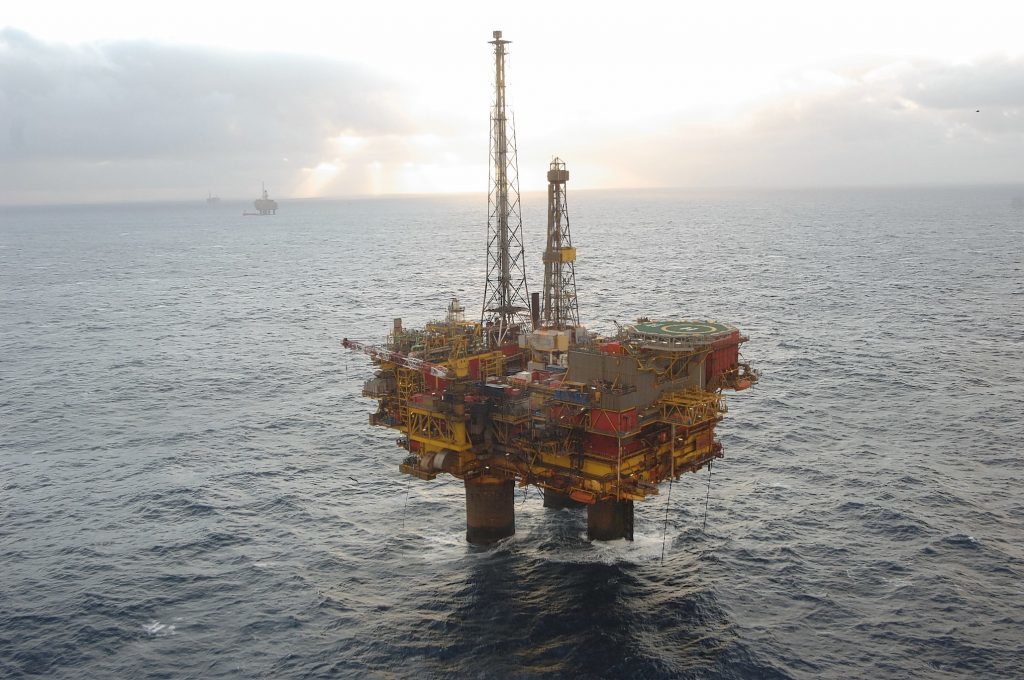
Shell reached an “important milestone” today as the firm submitted its plan for decommissioning the Brent field to the UK Government.
The news comes on the same day First Minister Nicola Sturgeon launched a £5million fund for North Sea decommissioning.
Shell is asking for permission to leave the giant legs of three of its four Brent field platforms in the North Sea, along with sediment in the storage cells, drill cuttings and heavier pipelines.
The lower part of the Alpha platform’s steel jacket would also be left behind.
The company intends to remove the topsides of the four Brent platforms, debris lying on the seabed, and the attic oil contained within the concrete storage cells of the gravity base structures.
Interested parties have until April 10 to make any concerns known as part of the 60-day consultation process.
If the UK Department for Business, Energy and Industrial Strategy (Beis) approves the plans, permission to leave structures behind must be granted by OSPAR, a pan-European body which was set-up to protect the marine environment of the north-east Atlantic and which takes its name from the Oslo and Paris Conventions.
Under OSPAR rules, installations must be removed in their entirety once they reach the end of their production cycle.
But that stipulation was brought in after the Brent platforms were installed and Shell is hopeful the organisation will give it an exemption.
Duncan Manning, Brent decommissioning asset manager, said today’s submission was another “important milestone in the history of the Brent oil and gas field”.
Mr Manning said the company had spent a decade carrying out research and consulting with stakeholders to inform its decommissioning programme.
He said: “Working within the tightly defined regulatory process, we believe that our recommendations are safe, technically achievable, environmentally sound and financially responsible.
“Shell encourages all those with an interest in the decommissioning of the Brent field to review, reflect on and respond to this consultation document.”
The decommissioning of Brent, which has produced oil for 40 years, is one of the most complex engineering projects of its kind and is expected to take a decade to complete.
The field lies about 110 miles north-east of Sheltand and is made up of four platforms, more than 140 wells, 64 storage shells and 28 pipelines.
Deirdre Michie, Oil & Gas UK’s chief executive, said Brent had been a “leading light” in the UK’s industrial success story.
Ms Michie said: “Ground-breaking ingenuity was required to bring the Brent field, located in the deep waters of the northern North Sea, into production and these skills will be required into the future as industry seeks to maximise economic recovery of the UK’s oil and gas alongside delivering decommissioning in a safe, environmentally responsible, and cost-efficient way.”
WWF Scotland director Lang Banks said he accepted the “principle” that companies can ask to leave some materials behind, including concrete legs, if it can be proven that removing them would be detrimental to the workforce and the environment.
Shell has said removing the 300,000 tonne legs would be “riddled with safety risks” and had little merit for the environment.
But Mr Banks said he would press Shell to do its utmost to remove potentially hazardous materials.
He said: “With almost 4,000 pages of technical documents to plough through it will take some time to understand the full potential impact of Shell’s plans on the marine environment. We will now begin the process of reading each page in order to prepare our formal response to the consultation.
“However, having been involved in the stakeholder engagement process for several years, we know there are a number of areas where Shell will need to be pressed to do more to deal with their potentially hazardous legacy.
“Oil and gas companies operating in the North Sea have a legal, as well as moral, obligation to clean-up their mess. Having once pushed the boundaries of science and engineering to secure the oil and gas beneath the seabed, the industry should show the same innovation when it comes to decommissioning.”

